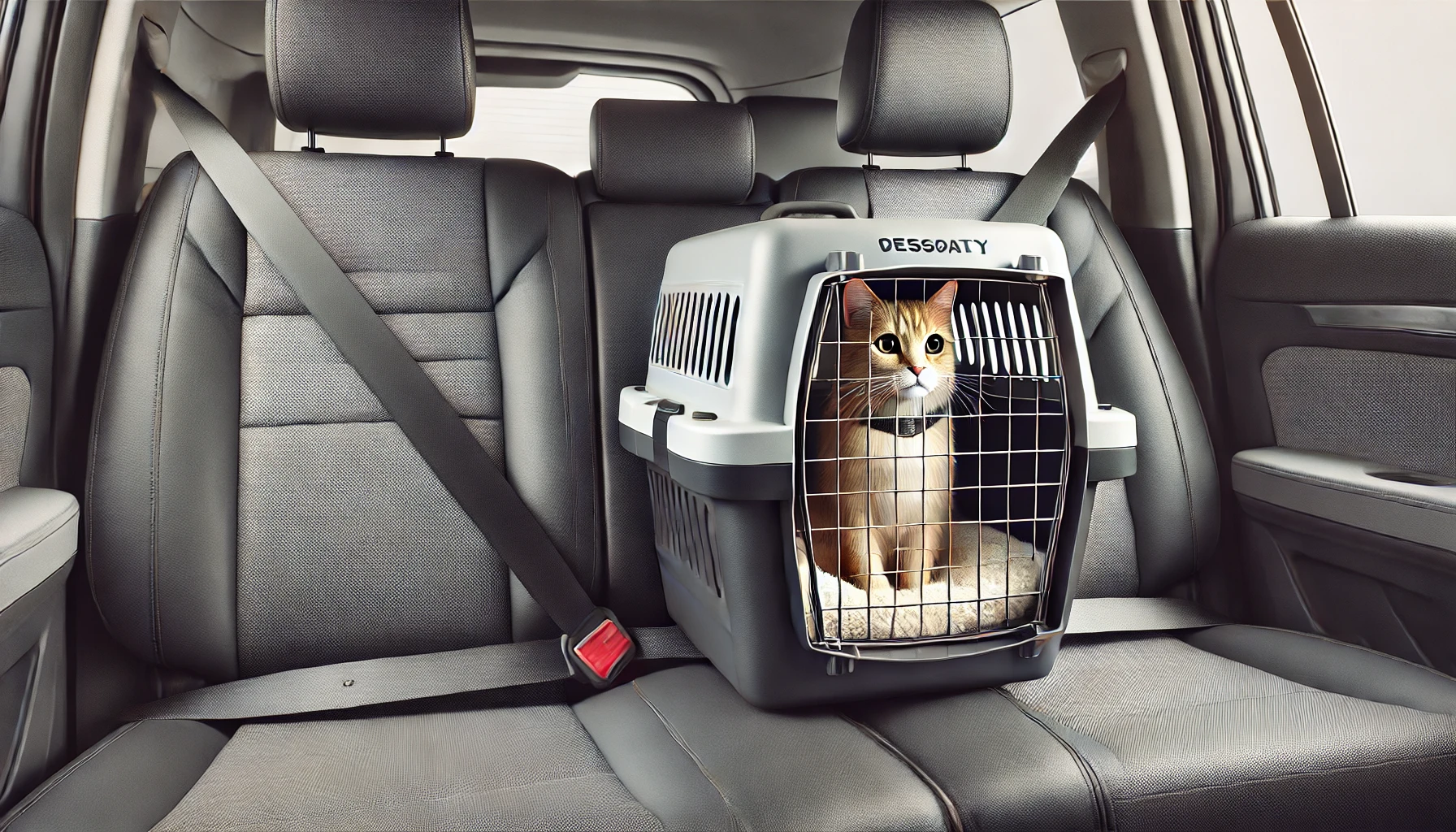Bringing a new baby home is an exciting but big change—not just for you, but also for your cat! Cats are creatures of habit and routine, so a sudden shift in attention, smells, and sounds can cause stress or anxiety.
With proper preparation and gradual introductions, your cat and baby can coexist peacefully and even form a loving bond.
1. Prepare Your Cat Before the Baby Arrives
Cats dislike sudden changes, so start making small adjustments before the baby comes home.
✅ How to Prepare in Advance:
✔ Gradually introduce baby-related sounds (play recordings of baby cries).
✔ Let your cat explore baby furniture and nursery items.
✔ Adjust feeding and playtime schedules to match your future routine.
✔ Use a pheromone diffuser (like Feliway) to reduce stress.
🚨 Common Mistake: Waiting until the baby arrives to make changes.
Instead: Start preparing weeks in advance to help your cat adjust.
2. Introduce Your Cat to the Baby’s Scent First
Before bringing the baby home, allow your cat to get used to their scent.
✅ How to Introduce the Baby’s Scent:
✔ Bring home a blanket or clothing with the baby’s smell.
✔ Let your cat sniff it in a calm environment.
✔ Reward with treats and positive reinforcement.
🚨 This helps your cat associate the baby’s scent with good things!
3. Make the First Meeting Calm and Controlled
When introducing your cat to the baby, keep it low-stress and positive.
✅ Steps for a Safe Introduction:
✔ Hold the baby while someone else gives the cat treats.
✔ Keep your cat at a comfortable distance.
✔ Let them observe the baby calmly—don’t force interaction.
✔ Speak in a gentle, reassuring tone.
🚨 If your cat seems nervous, give them space and try again later.
4. Maintain Your Cat’s Usual Routine
Cats feel safe with predictability, so keeping their schedule stable prevents stress.
✅ Stick to Regular Routines:
✔ Feed your cat at the same times daily.
✔ Keep playtime consistent (even if shorter).
✔ Provide quiet spots for relaxation.
🚨 Common Mistake: Ignoring your cat due to baby duties.
Instead: Spend quality time with them daily—even a few minutes makes a difference!
5. Create Baby-Free Zones for Your Cat
Cats need safe spaces where they can escape from noise and activity.
✅ How to Set Up a Baby-Free Zone:
✔ Provide a quiet room or high perches where your cat can relax.
✔ Make sure litter boxes, food, and water remain undisturbed.
✔ If needed, use baby gates to block off certain areas.
🚨 Cats may feel overwhelmed if they can’t find a quiet place to retreat.
6. Teach Your Baby to Respect the Cat
As your baby grows, it’s important to teach gentle interactions.
✅ Best Practices for Baby and Cat Bonding:
✔ Show your child how to gently pet the cat (no grabbing!).
✔ Always supervise baby-cat interactions.
✔ Give the cat an escape route during playtime.
🚨 Common Mistake: Allowing rough handling.
Instead: Teach your child respectful, gentle behavior from the start.
7. Address Any Signs of Stress or Jealousy
Your cat may feel anxious or left out when attention shifts to the baby.
🚨 Signs of Stress in Cats:
❌ Hiding more than usual.
❌ Excessive meowing or clinginess.
❌ Litter box accidents.
❌ Overgrooming (a sign of anxiety).
✅ How to Help Your Cat Feel Included:
✔ Give extra affection and playtime.
✔ Stick to a consistent daily schedule.
✔ Reward calm behavior near the baby with treats.
🚨 Never punish stress-related behaviors—use positive reinforcement!
8. Keep the Nursery Cat-Free When Needed
Some parents prefer to keep cats out of the baby’s room for safety reasons.
✅ How to Gently Keep Cats Out of the Nursery:
✔ Use a baby gate or keep the door closed.
✔ Provide a cozy sleeping area elsewhere.
✔ Give them extra attention outside the nursery.
🚨 If your cat insists on exploring, let them sniff around under supervision before gently redirecting them.
9. Be Aware of Allergies and Hygiene
If anyone in the family has allergies, taking precautions helps prevent discomfort.
✅ Ways to Reduce Allergens:
✔ Vacuum frequently to remove fur and dander.
✔ Keep a litter box in a well-ventilated area.
✔ Wash hands after handling the cat (especially before touching the baby).
🚨 If your baby shows allergy symptoms, consult a pediatrician.
10. Be Patient—It Takes Time!
Adjusting to a new baby is a big change, but with time, your cat will adapt.
🐾 Signs Your Cat is Adjusting Well:
✅ Shows curiosity without fear.
✅ Stays relaxed around baby sounds.
✅ Continues normal eating, grooming, and behavior.
🚨 If your cat struggles to adjust after months, consult a vet or behaviorist for support.
Final Thoughts
Introducing a baby to your cat takes preparation, patience, and gradual steps, but with the right approach, they can live happily together!
🐱 Key Takeaways:
✅ Prepare your cat before the baby arrives.
✅ Introduce the baby’s scent first.
✅ Keep the first meeting calm and positive.
✅ Maintain your cat’s daily routine.
✅ Provide quiet spaces and baby-free zones.
✅ Teach gentle interactions as your baby grows.
✅ Watch for signs of stress or anxiety.
✅ Be patient—adjustment takes time.
With gentle introductions and a stable routine, your cat and baby can form a lifelong bond! 🐾👶💖





